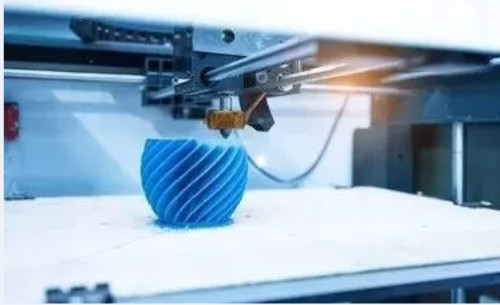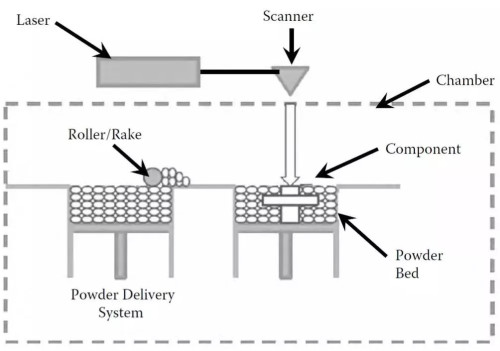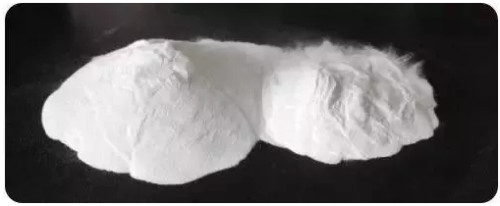Recently, with the launch of Wanhua PP powder material WANFAB® PP700N, PP will enter a new application field – 3D printing.
1. What is 3D printing technology
3D printing technology, also known as additive manufacturing technology, is an advanced manufacturing technology that originated in the 1980s and integrates machinery, computers, numerical control and materials.
The basic principle of this technology is based on the two-dimensional cross-section information obtained by slicing the three-dimensional solid parts, and the point, line or surface is used as the basic unit for layer-by-layer manufacturing, and finally the solid part or prototype is obtained.

Image source: Wanhua Micro Vision
Compared with the traditional subtractive material (such as cutting) and equal material (such as forging) manufacturing methods, it can realize the manufacture of complex structural parts that cannot or are difficult to achieve by traditional methods, and greatly reduce the processing steps and shorten the processing cycle , Eliminate material waste, and quickly manufacture three-dimensional solid parts with complex shapes without molds and fixtures.
3 key elements of 3D printing:
1. The product requires precise three-dimensional design, and uses computer-aided design (CAD) tools to accurately position the product in all directions.
2. Powerful molding equipment.
3. Materials that meet product performance and molding process are required.
2. Resin plastic is the main material of 3D printing
At present, resin plastics are the most mature materials for 3D printing, which cannot fully meet the needs of high-end industrial 3D printing. Therefore, existing plastic materials need to be continuously improved and improved. The plastic material has the characteristics of thermoplasticity and meltability. In the molten state, it is extruded from the nozzle, and the product is finally formed by solidification layer by layer.
Due to the good thermal fluidity, fast cooling adhesion and high mechanical strength of plastic materials, they have been rapidly applied and developed in the field of 3D printing manufacturing. The melting and bonding properties of plastic materials gradually use resin plastics for ceramics, glass, inorganic gels, fibers, metals, etc., and become the basic materials for 3D printing.
3D printing technology can be realized through a variety of processes, including fused deposition modeling (FDM), selective laser sintering (SLS), ultraviolet curing (SLA), etc. Among them, SLS has the advantages of high molding precision, no need to add support structures and recyclable powder, and has been widely used in the manufacturing field. The 3D printed running shoes, which have been very popular in recent years, have special structural design soles printed using SLS technology, which can not only fit the shape of the wearer’s feet, but also obtain a unique wearing experience by adjusting the topological structure of the sole, or have high elasticity. , or hard and thick, these are the embodiment of the superiority of SLS technology.

Schematic diagram of selective laser sintering SLS process
The materials used in the SLS process include: wax powder, plastic powder, ceramic powder, metal powder and other powder materials. Among them, commonly used plastic powders include: PA, TPU, PLA, ABS, PEEK, PCL, etc.
As one of the five general-purpose polymer materials, polypropylene (PP) has the advantages of low density, high strength, heat resistance, good insulation, stable chemical properties and low price, and has great application potential in the field of 3D printing .
However, PP has a large shrinkage in the process of melting and crystallization, which is reflected in the macroscopic volume shrinkage of the part, which makes PP prone to warping and deformation during the SLS process, and the forming accuracy of the product is poor; and the forming The products have low toughness and are easy to break. In addition, due to the tertiary carbon atoms in the molecular structure of PP, PP powder is easily decomposed during laser sintering and cannot be reused many times. The above factors make it difficult to promote the use of PP in SLS.
3. PP squeezes into 3D printing material
Solving the pain points of the industry and focusing on the development of new materials has always been the business philosophy of Wanhua Chemical. For the SLS process, in addition to TPU and PA powder materials that have been widely promoted, Wanhua Chemical has recently launched a PP powder material—WANFAB® PP700N . The PP powder has the characteristics of high sphericity, moderate particle size and narrow particle size distribution. In addition, the powder has high fluidity and the powder bed is flat and smooth, which gives SLS printing good printing accuracy.

Wanhua Chemical WANFAB® PP700N Polypropylene Powder
WANFAB® PP700N adopts the material formula customized and developed by Wanhua, which can effectively solve the problem of warping and deformation during SLS printing, and has high printing accuracy; the elongation at break of the product can reach 20%, and the toughness is good. In addition, the special combination of additives makes PP powder have excellent thermal stability, which can be recycled and used many times, greatlyReduced printing costs.

4. The prosperity of 3D printing technology will boost the development of high-end polyolefin
According to Wohlers statistics, after nearly a decade of rapid development, the global 3D printing market reached US$7.3 billion in 2017, and IDC predicts that the global output value will reach US$28.9 billion in 2020. It can be predicted that in the next ten years, the global additive manufacturing industry will still be in a period of rapid growth, with huge development potential.

Image source: Wohlers
At present, my country’s 3D printing has become increasingly mature and the market is growing rapidly. In 2017, the scale of my country’s additive manufacturing industry has exceeded 10 billion yuan, and the Qianzhan Industry Research Institute predicts that the scale of my country’s 3D printing market will reach about 50 billion yuan in 2022.

Image source: Qianzhan Industry Research Institute
Since 3D printing manufacturing technology has completely changed the methods and principles of traditional manufacturing industries, it is a subversion of traditional manufacturing models, so 3D printing materials have become the main bottleneck restricting the development of 3D printing, and also the key point for 3D printing breakthrough innovation And the difficulty lies in that only the development of more new materials can expand the application field of 3D printing technology.
With the further development of 3D printing technology, the performance of traditional plastics will be greatly improved, relying on the strong rapid fusion deposition and low temperature bonding characteristics of plastics will be widely used in the field of 3D printing manufacturing.
For polyolefin materials, this field cannot be missed. Wanhua’s latest PP powder material—WANFAB® PP700N can be said to be a good start. In addition, it has also launched a series of material solutions for different 3D printing processes: WANFAB-FT (TPU wire), WANFAB-PU (TPU powder), WANFAB-PN ( Nylon powder), WANFAB-UV (photosensitive resin), WANFAB-PP (PP powder), etc.
I believe that under the trend of 3D printing, more polyolefin manufacturers will enter this field to develop and produce products that meet the requirements of 3D printing, which will also boost my country’s development in the high-end polyolefin field.



 微信扫一扫打赏
微信扫一扫打赏
